Granada – Explore It on Foot Part II
In the previous post I told readers why renting an audio tour of Granada Spain was, in my opinion, probably the best way to explore the city on foot over a two day period. In that post we got as far as the Capilla Real and the tombs of Ferdinand and Isabella. In this post we’ll continue our walking tour of Granada Spain at the cathedral which is actually connected to the Capilla Real, but you must enter the cathedral from a separate entrance off Via de Colon. The first thing you need to do on approaching the entrance is not get scammed by the gypsy women offering rosemary sprigs in an apparently friendly gesture. If you accept, your hand will be grabbed and she will pretend to start reading your fortune. If you try to get away without paying her off be prepared for screaming and pleading. Luckily I’d read about this scam in advance and when the women shoved the rosemary sprigs at us as I just ignored them. Why the Spanish police allow this shit to go on is beyond me.
Granada Cathedral
The history of Granada cathedral, whose website is in Spanish only btw, is at least as interesting as the building itself. Since Granada was not taken by Christian forces under Ferdinand and Isabella until 1492, it was just a bit too late to build in the Gothic style of most other notable Spanish cathedrals. It did start out in the Gothic style under Enrique Egas who had a hand in the Gothic Capilla Real which was started in the very early 1500’s. The cathedral never got underway until 1523 for the simple reason that they had to tear down one of the largest mosques in Spain first. Most other mosques in Granada were simply converted to Christian churches after the reconquista, but Ferdinand and Isabella were having none of that for what they expected to be the ultimate in your face monument marking the conclusion of 800 years of Moorish rule in Spain. Whether or not they succeeded is debatable. On a list of the most beautiful churches in Spain, Granada comes in well down the list. One of the reasons has to be that the area around the cathedral has become so built up that you can’t get any idea of its actual exterior appearance unless maybe you rent a helicopter or climb to the top of the Alcazaba in the Alhambra complex. And if you did, here’s what you would see. Kind of underwhelming.
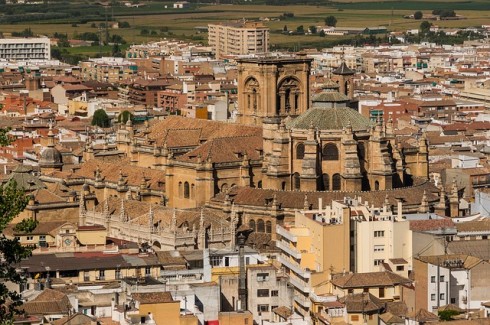
Here is the entrance to the cathedral which is only so so as far as these type of buildings go.
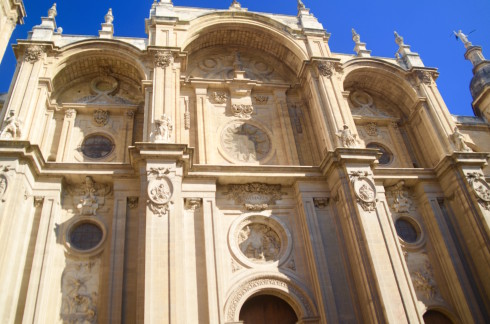
After Egas’ death the building morphed into more of a Renaissance design under Diego de Siloé who had trained in Italy and was familiar with the works of Michelangelo and Donatello. All cathedrals are shaped in the design of a cross with longest part of the cross being the nave, the crossbar being the transept and the smallest part at the top, the apse. These are the type of things you can learn by taking bird courses like art history in undergrad.
In most cathedrals there are three parts to the nave – the central nave almost always being higher than the two side naves. In Granada cathedral there are five naves with the result that the building is really a giant rectangle and not a cross. What does all this matter? Not a whit, other than to say the interior of Granada cathedral is frigging huge. The only reason I’m being somewhat critical of the place is because I can compare it to other Spanish cathedrals. If this was the only cathedral you were ever to see, you would be blown away. Look at the size of those supporting columns.
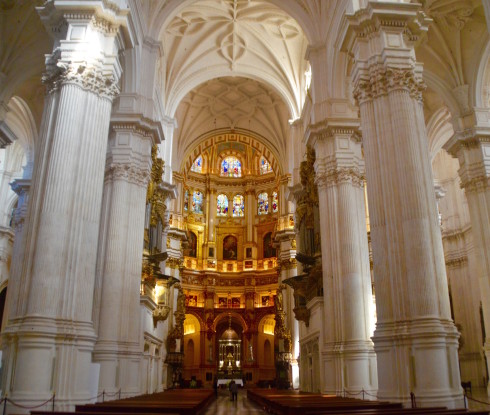
Here is the apse with a spectacularly starred dome. In most cathedrals you’ll find the dome at the point where the nave and transept intersect, so this is quite unusual and effective.
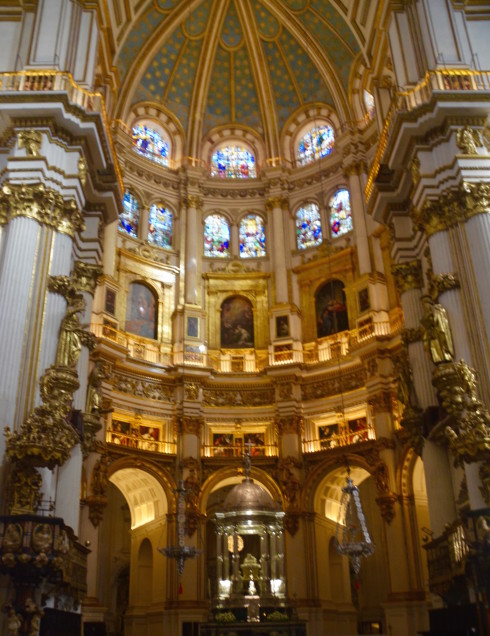
You can’t have a Spanish cathedral without a massive organ and this one is no exception. I guess you could say the building is well hung.
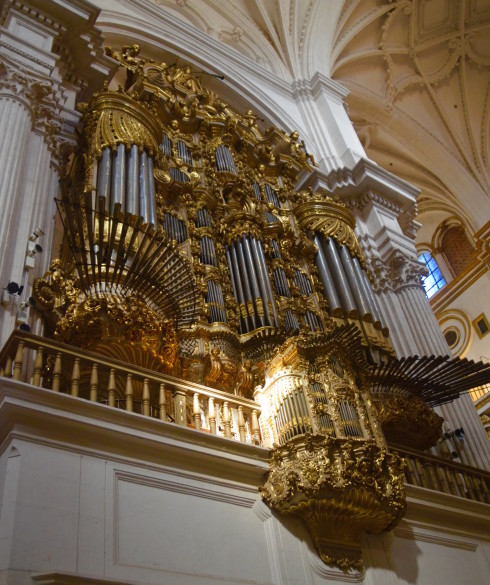
For me the most impressive thing in the cathedral was this stained glass depiction of the Holy Spirit.
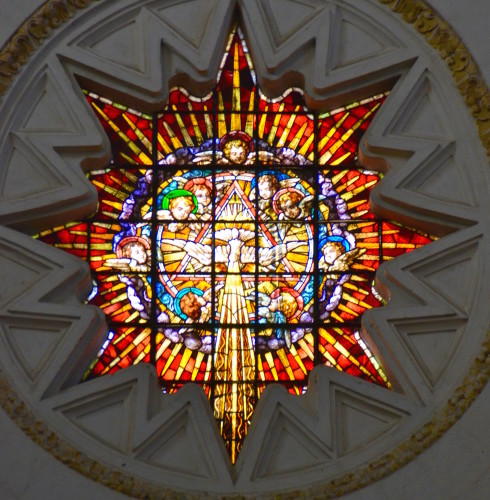
Certainly the most ghastly thing was this decapitated head of John the Baptist. I’ve mentioned in previous posts just how good and lifelike Spanish wooden sculpture is and this is a great example. There are many others in the many chapels and altars of Granada cathedral.
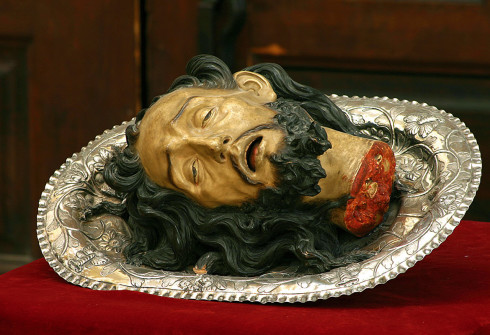
The reality is that it is one giant art gallery that you could spend an entire day exploring, but there is only so much religiously themed art that I can digest at one sitting. Time to move on and get some fresh air.
Thanks to following the map that comes with the audioguides we make our way out the main tourist area of Granada, past a few more churches (you can see from blue sky in the photo that it is a glorious day in Granada) to the Carrera de la Virgen which is a lovely boulevard with a paseo down the middle where Grenadians are walking their dogs and children, enjoying this fine afternoon. It’s just natural for Alison and I to hold hands as we walk towards the fountain at the end of the paseo where its waters are gleaming in the sunlight.
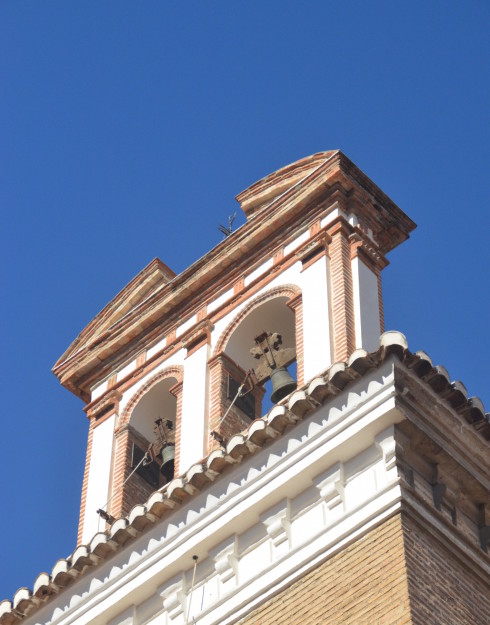
Basilica of Angustias
Along the way we pass the exterior of yet another large church, the Basilica of Angustias, which doesn’t look like too much from the outside.
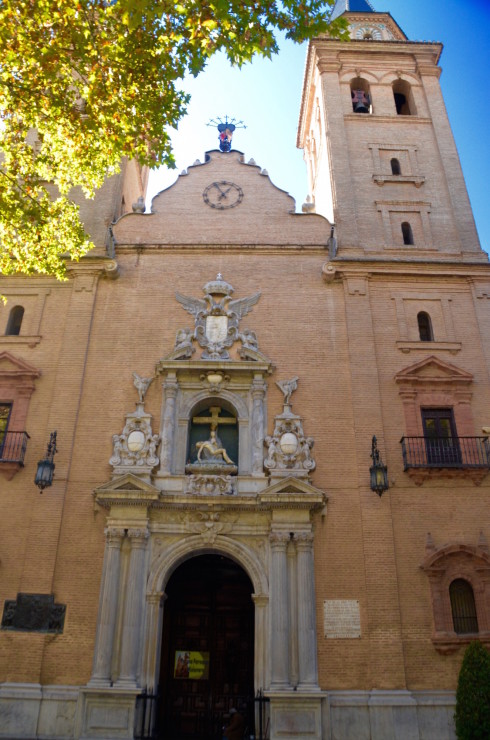
However, when we step inside the interior is a mind-blowing riot of Spanish baroque unlike any I have ever seen. There was no photography allowed so I got this image from wikipedia. As you can see, every square inch of the place is decorated in over the top rococo style that I used to think was the ultimate in decadence and it probably is. These type of buildings date from the period that Spain, absolutely bloated on New World gold and silver, began a long descent from pre-eminence among European powers to becoming an inbreeding fueled embarrassment.
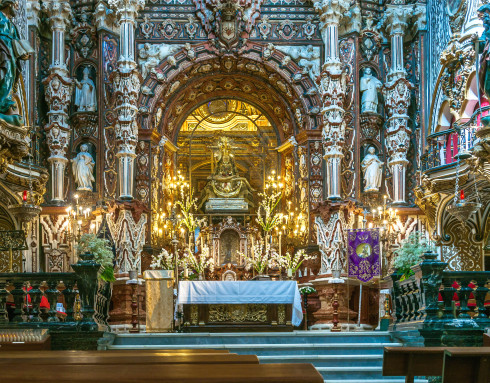
All that being said, it has an unquestionable majesty that I would have seriously doubted, if not for seeing the interior in person.
The Carrera de la Virgen ends at the modern Fuente de las Granadas and a park along the Genil River. It’s a welcome green space after all the time we’ve spent indoors today.
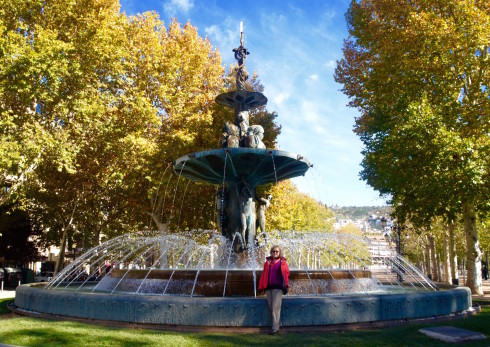
From here we gradually make our way back towards the Albaicin neighbourhood where we are staying. The audioguide takes us on a few detours to look at and learn the history of even more historic buildings including this small monastery tucked away in a back street.
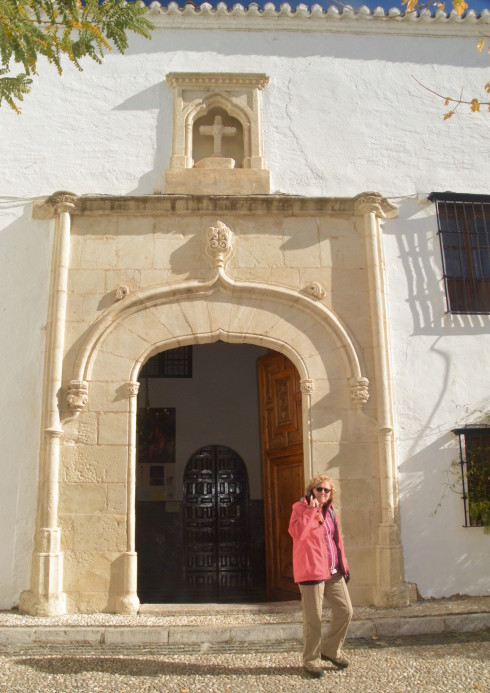
Eventually we reach the Real Chancilleria de Granada (Royal Chancery) which dates back to the 1500’s and now houses the High Court of Andalusia.
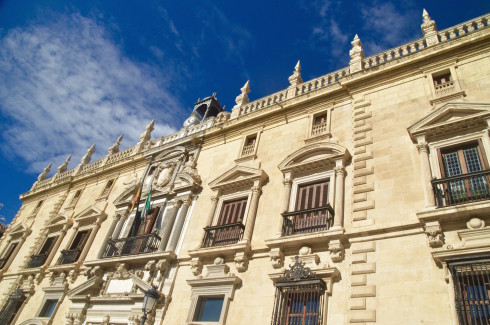
The Chancilleria is located in Plaza Nuevo which marks the point at which the Darro River first comes into view and the Carrera del Darro begins following the course of the river as it tumbles down a ravine that divides the Albaicin area on one side and the high cliffs atop which sits the Alhambra on the other. It’s a wonderful street, alive with pedestrians frequenting the many bars and restaurants along its course.
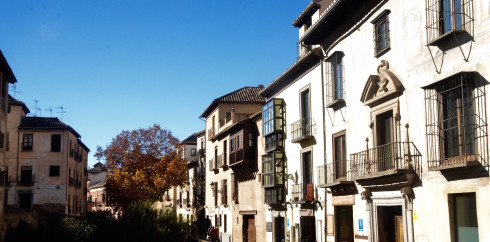
It’s the perfect place to stop for a late afternoon beverage, in this case, right across from this statute of Mario Maya, one of the greatest flamenco dancers of modern times. I haven’t really written about flamenco dancing and Granada, but there are flamenco bars everywhere and the sound of the Spanish guitar is omnipresent in the quieter parts of the city. Maya, aka El Moreno, was a gypsy who grew up in the Sacramonte area of Granada which you will come to if you keep on following the Darro River up into the hills.
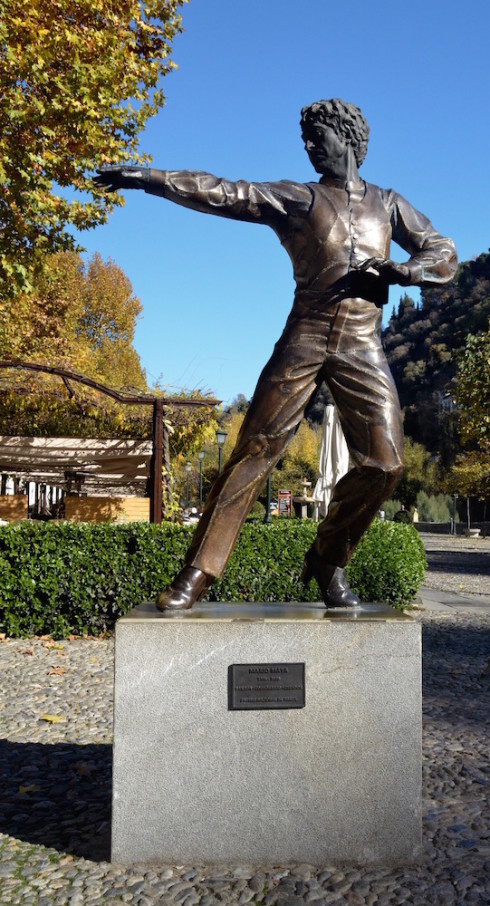
Here’s a YouTube video with a compilation of Mario’s famous dance moves.
The other thing I can see from the terrace we are sitting on is this.
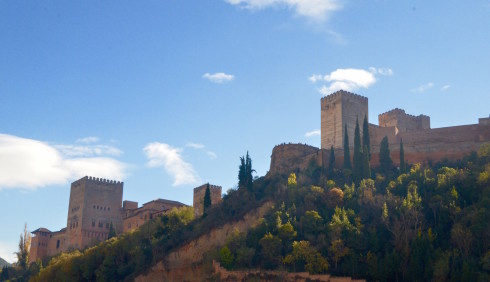
Yep, that’s the Alhambra up there. This is the fourth post I’ve written on Granada and you are probably wondering “when the hell is he going to go to the Alhambra?” How about tomorrow? It’s been a long day exploring Granada Spain and I hope you’ll join me at the Alhambra. It’s something I’ve been waiting a lifetime to see.
If you can’t wait you can read the two posts I wrote on tips for enjoying the Alhambra and specifically on the Nasrid Palaces.

